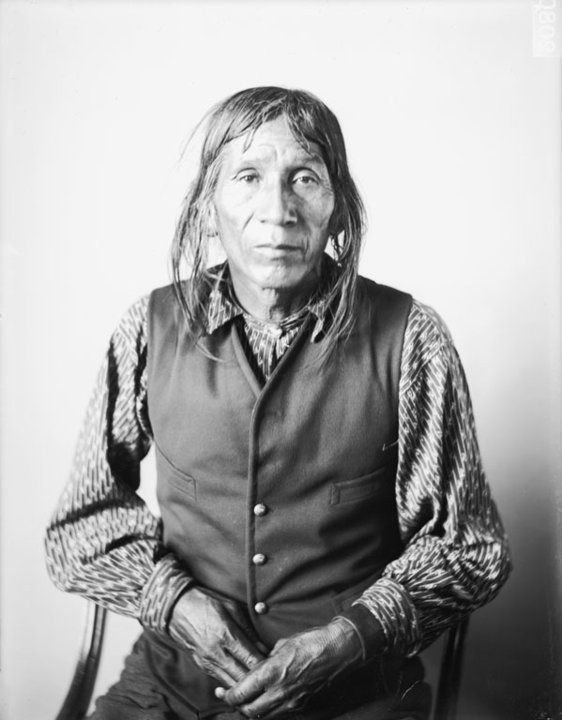Quarai Pueblo and Mission, Torrence County
Current Population: <500
Language: Tiwa
Early Societal Structure: Patrilineal clans with ritual patrimoieties with kivas for each moiety
Location: 22,877 acres, from the foothills of the Sandía Mountains to the banks of the Río Grande, just north of Albuquerque.

Click to expand

Sandia Pueblo has resided in its current location since 1300 A.D. The Sandia Mountain provides the source of their spirituality as well as plants, animals and other resources which have been critical to their survival in this desert region. Sandia was once the largest pueblo in the area. When Coronado arrived, they had over 3,000 people and 20 villages. They currently have just under 500 members.
Sandia became a settlement for Spanish explorers in 1617 when it was established as the seat of the mission of San Francisco. The Spanish exacted tribute and enslaved members of the Sandía Pueblo people for labor in the building of churches and in Mexican mines. As a result of the resentment against this abuse, the Sandía, who had already offered sanctuary for Zía and Jémez rebels, were one of the pueblos involved in the 1680 Pueblo Revolt. They did not find freedom, however, as Popé and his successor Luis Tupatú exacted as heavy a tribute as the Spanish and the raiding tribes had.
The people of Sandia fled to neighboring Hopi lands after the revolt. Their home was left unprotected and was looted. As punishment for their insurrection, Antoinio de Otermin (governor of the territory) ordered the abandoned village to be burned.
The Spanish repeatedly attempted to reconquer the Tiguex Province in 1681, 1688, and 1692. During each attempt, Sandians abandoned their Pueblo and eventually fled to Hopi lands in Arizona where they resettled in the village of Payupki. Their requests for resettlement were ignored until Father Menchero petitioned Spain’s governor to allow settlement at Sandia and permission for resettlement was granted in 1748.
On May 24, 1762, Governor Tomas Cachupin ordered the Pueblo of Sandia be completely rebuilt and that the Sandia people were not to be worked as laborers for Spanish farmers until the Pueblo and church were reconstructed.
Sandians were allowed to resettle in their original Pueblo to create a buffer against raiding tribes, such as Navajos and Comanches. In 1775, by Sandia acting as that “buffer” they lost 30 men in an attack from the Comanche. Sandia was constantly raided by Apaches, Navajos and Comanche until a truce was struck near “Poi P’a Huth” or Friendship Arroyo” in the Placitas area.
The Sandía returned after each Spanish attack, with the 441 surviving Sandía resettling permanently in 1742. In 1762, Governor Tomás Cachupín ordered the rebuilding of Sandía Pueblo (although his concern was primarily the housing of the Hopi who had found refuge there) as a buffer between the settlement at Albuquerque and the raids of the semi-nomadic Navajo and Apache. As a result, Sandía was raided continuously, the most deadly of such events occurring in 1775 when a Comanche raid killed thirty. The Hopi suffered the brunt of the attack as a result of their segregation from the Sandía, which has minimized their influence in the Pueblo. As a result of wars with Spanish conquistadors and raids from neighboring indigenous nations, the Sandía Pueblo diminished, numbering 350 by 1748, and dwindling to 74 by 1900.
Tribal authorities have sometimes had conflicts with state and federal authorities. They have sought to assert their longstanding claim to the Sandia Mountains east of the ridge, and they strongly opposed the construction of the Sandia Peak Tramway in 1966.
The tribe opened Bien Mur Indian Market Center in 1975. They sell authentic native arts and crafts. After this, they opened Sandia Lakes Recreation area on 58 acres of land in the Bosque. They opened a casino in 1994, and have since expanded and added a hotel to the facility. The casino has an ampitheter whis hosts many touring performers. Sandia Pueblo also owns and operates Bobcat Ranch - a 15,500 where they offer elk and turkey hunting.
Among the services Sandia offers their people is their Health Center, which is operated by the Pueblo. The mission of the Health Center is “to improve the health outcomes and quality of life for all generations by providing accessible, integrated, and culturally sensitive healthcare services that meet the needs of the Sandia people.” The services provided include primary care, general dentistry, optometry, behavioral health, physical therapy, audiology, chiropractic, massage therapy, health education and prevention, transportation services, and administrative/business services. We offer specialty dental services in prosthodontic, endodontic, and periodontic care.










